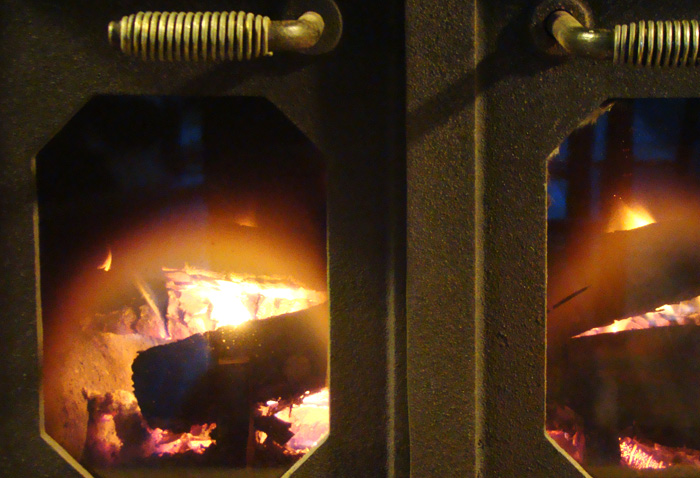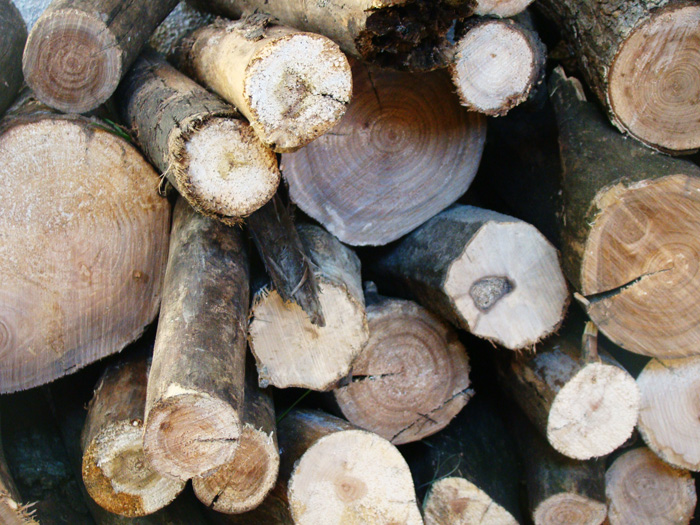It’s fall now, with cooler temperatures at night — down to the mid-30s last night, the first warning of frost — and we’re using the old wood-burning Buckstove insert that came with the house. The stove looks to be about 30 years old, a solid black box. I cleaned it up the other day, brushed off flakes of black creosote, wiped down the glass windows in the doors, and stuck my head into the stove and scraped off more black deposits up in the flue. Climbed onto the roof, peered down into the chimney, which seemed relatively clean and clear, but we’ll still have to brush it out.
From what we can tell, the Buckstove is fully functional, though worn from age. The fan rattles on the high and low settings, but the mid-range seems fine.
Yesterday, with the help of family, we cut down the last of four trunks of the big cedar tree near the house, and hauled the 16-foot section to the top of the hill, for use in building the “observation tower” in the future.
Then, in afternoon, Paula and I successfully downed a tall dead elm along the lane that winds back to the open meadow. And just as quickly, our 4×4 truck was swarmed by yellowjackets after the tree hit the ground. So we had to pack up and cut wood elsewhere.
And a few hours earlier, we had discovered a 6-inch-wide yellowjacket hole in the ground, with wasps spinning in and out, near downed trees that were about to cut. I don’t want to consider how angry and agitated the wasps might have become if we had started the chainsaw next to their nest.
After the sun had gone down, around nine, Paula walked out past the barn and drove the truck back to the house, but when she got out of the truck, a lone yellowjacket started attacking her, and she ran into the house.
The approaching cold weather will come as a relief, hopefully killing the ubiquitous wasps, and we hope the old Buckstove can keep us warm enough through the first winter on the land here.






